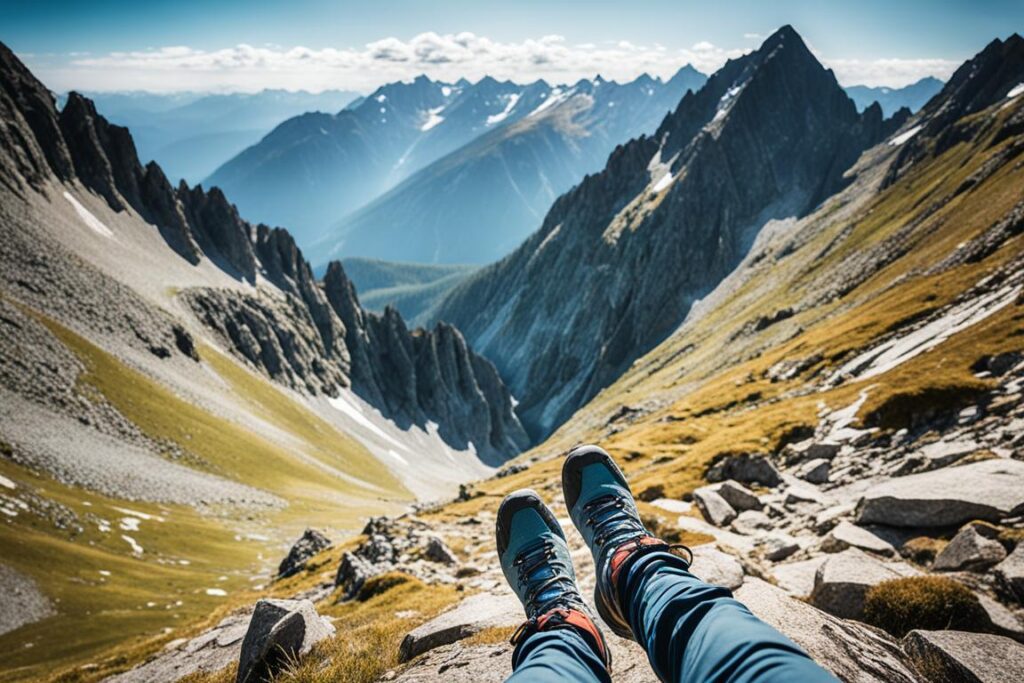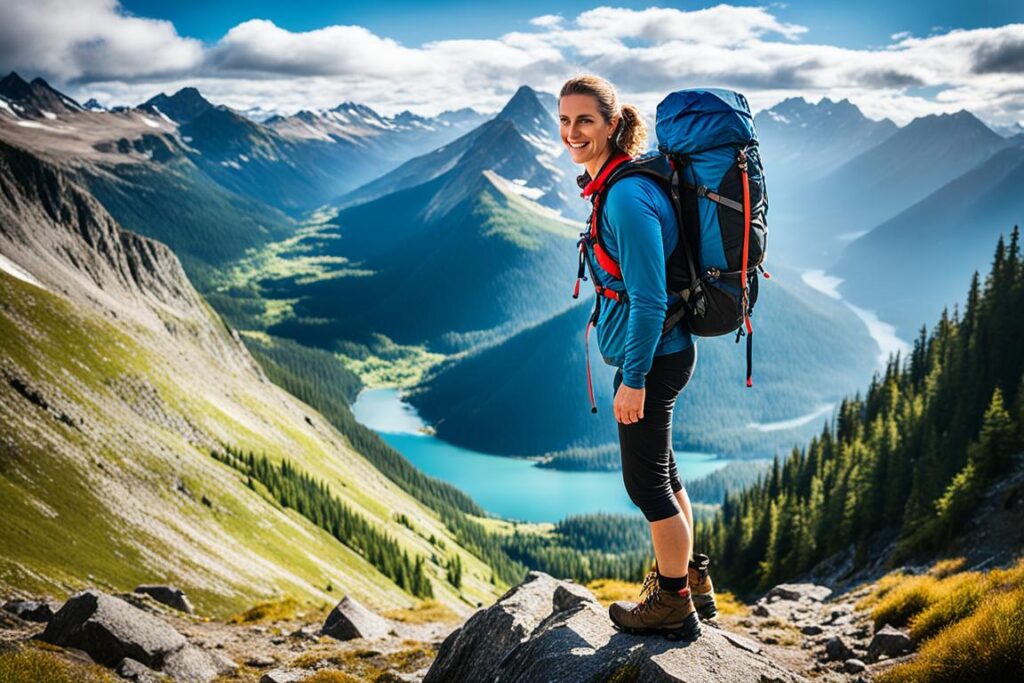Long-distance hiking needs the right shoes for your journey to be comfortable and successful. This is true whether you’re walking on tough trails or going on a hike that lasts days. It’s key to pick shoes that fit your needs well.
Good hiking shoes or boots should be both strong and comfy. Hiking boots protect your ankles and feet from rough ground. Trail shoes are a lighter choice, offering more freedom and air flow.
Think about how long your hike will be and what kind of ground you’ll walk on. For hiking a long way, you need shoes that won’t wear out. Look for high-grade materials and tough build quality that can handle the outdoors.
There are certain shoes many experts recommend for long hikes. The Altra Lone Peak 7, with a zero drop, fits the natural curve of your foot, enhancing comfort. The Topo Ultraventure 3 is stable with a low drop, giving good balance. The Hoka Speedgoat 5 has a curved sole for better shock absorption and a smooth walk. If you prefer boots, the Brooks Cascadia 16 is great for grip and protection. The Salomon XA Pro 3D V 8, with a higher drop, adds steadiness for long trails.
Key Takeaways:
- Choosing the right footwear is crucial for long-distance hiking.
- Hiking boots offer ankle support and protection, while trail shoes provide flexibility and breathability.
- Durability is essential for withstanding the rigors of long-distance hikes.
- Consider factors such as cushioning, width, and drop when selecting footwear.
- Recommended shoes for long-distance hiking include the Altra Lone Peak 7, Topo Ultraventure 3, Hoka Speedgoat 5, Brooks Cascadia 16, and Salomon XA Pro 3D V 8.
Factors to Consider When Choosing Hiking Footwear
Choosing the right hiking shoes is crucial for your outdoor adventures. You need shoes that are comfy and last long. They must also fit your needs well. Here are key tips to help you choose wisely:
- Level of Cushioning: Hiking shoes come in various cushioning types. You should balance support with the freedom to move. Too much cushioning can restrict natural foot motion. On the other hand, too little can make you tired and sore.
- Width: Feet vary in size and shape, so picking the right width is important. If shoes are too narrow, they might cause blisters. If they’re too wide, you might not have enough support. Make sure your shoes are snug but not tight.
- Drop: The shoe’s drop affects how you walk or run. It’s best to slowly change the drop to avoid injuries. Don’t change too much at once. Let your body get used to each change.
Each person is unique, so what’s perfect for one may not be for another. Try on different shoes and walk in them. This will help you see how they feel. Also, get help from shoe experts who understand what you need.
Before any long hike, remember to prepare your feet. Train them by walking a lot and doing exercises. This makes your feet stronger. It lowers the chance of getting hurt on long hikes.

By taking your time and focusing on what suits you best, you’ll find hiking shoes that are both comfortable and performance-ready for your adventures.
Conclusion
Choosing the right shoes for long hikes is personal. It depends on things like how much cushioning you need, the shoe’s width, and its heel drop. While there’s no perfect shoe for everyone, the Altra Lone Peak 7, Topo Ultraventure 3, Hoka Speedgoat 5, Brooks Cascadia 16, and Salomon XA Pro 3D V 8 are often recommended. They each offer unique features and advantages.
When picking your shoes, think about the shape of your feet, how you land when you step, and how your foot moves. It’s also vital to prepare your body and feet for new shoes slowly. This helps avoid injuries. Changing your shoes every 300 to 500 miles is key to staying comfortable and injury-free.
The right hiking footwear ensures your long hikes are enjoyable. With careful choice and maintenance, you’ll be ready to hit the trails for miles without discomfort.



